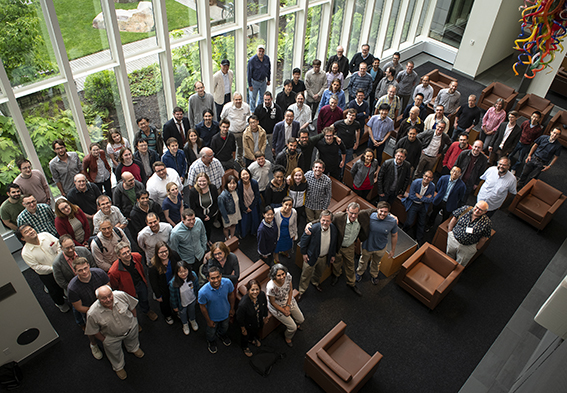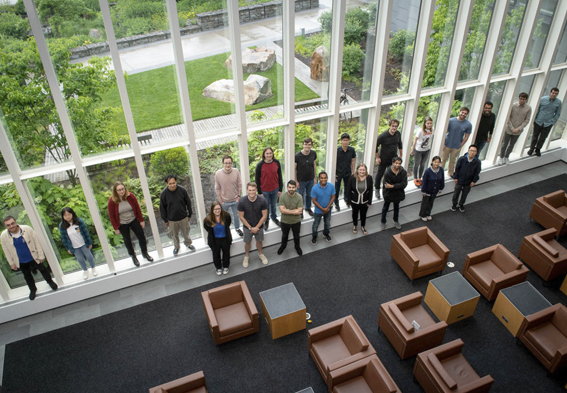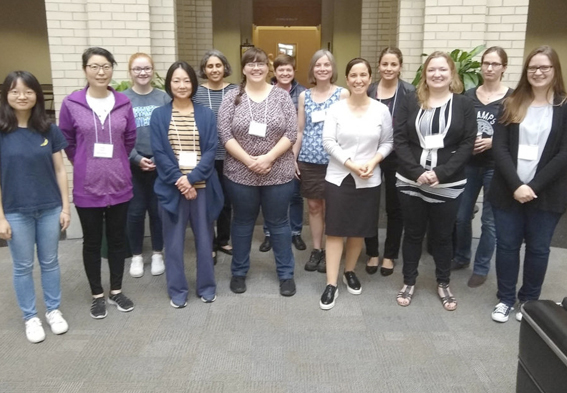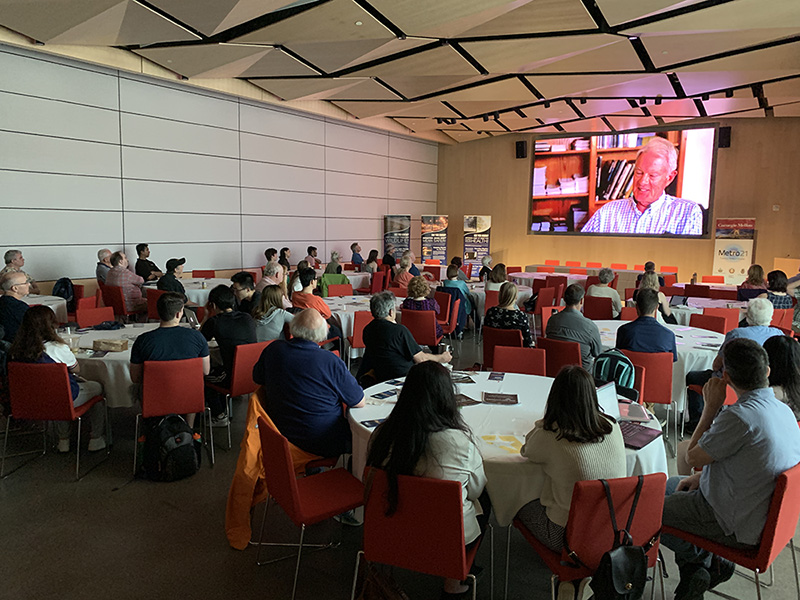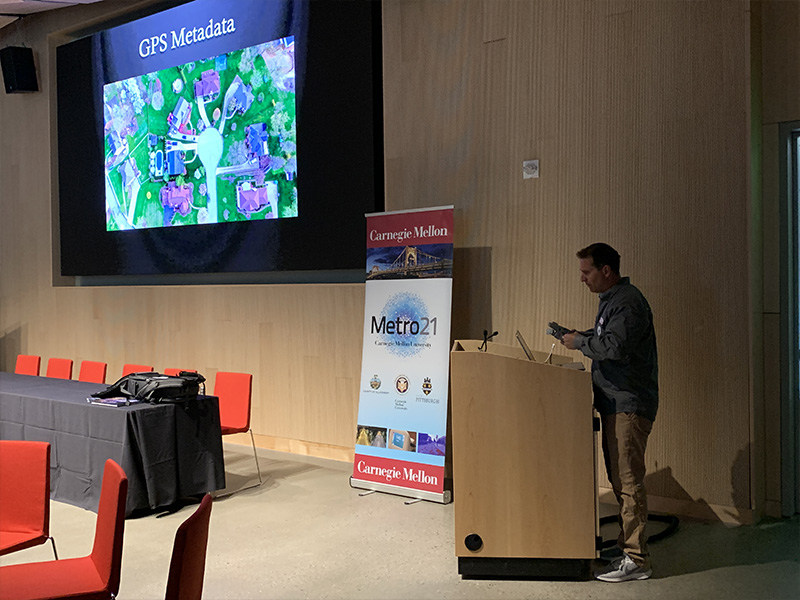
Physics Faculty Receive Endowed Professorships
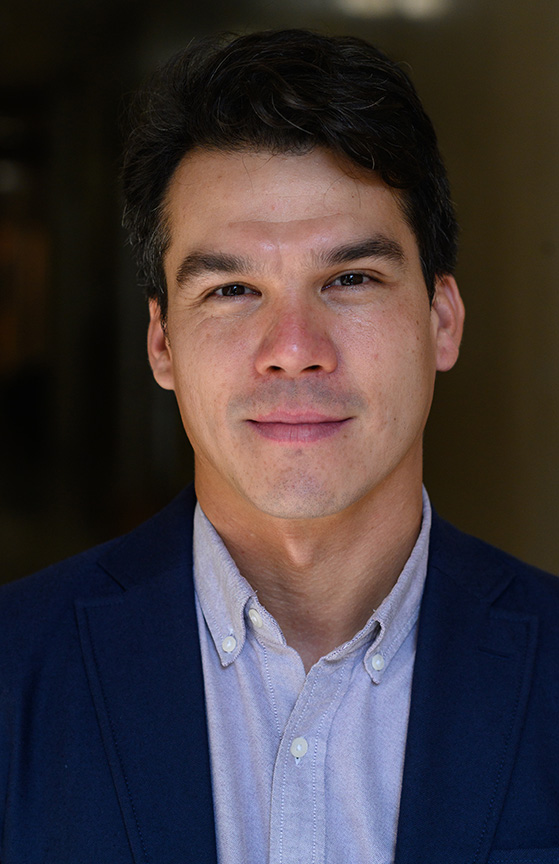
Falco DeBenedetti Career Development Professorship in Physics
Benjamin Hunt, Assistant Professor of Physics
Hunt joined the Carnegie Mellon faculty after earning his Ph.D. at Cornell University and completing postdoctoral research at Columbia University and the Massachusetts Institute of Technology. An experimental condensed matter physicist, Hunt studies the complex behavior matter exhibits in the quantum limit, including in two-dimensional materials. Hunt has received an Early Career Award from the Department of Energy and a Cottrell Scholar Award.
Emma Falco DeBenedetti established the Falco DeBenedetti Professorship in 2013 in memory of her husband, Sergio DeBenedetti. DeBenedetti joined Carnegie Tech, now Carnegie Mellon, in 1949 and taught and conducted research at Carnegie Tech and Carnegie Mellon until he retired in 1984.
Otto Stern Professorship of Physics
Curtis Meyer, Professor of Physics
Meyer joined the Carnegie Mellon faculty in 1993 after earning his Ph.D. from the University of California, Berkeley and completing postdoctoral work at the University of Zürich. A nuclear and particle physicist, Meyer furthers our understanding of quantum chromodynamics through his research on the nuclear matter that makes up the universe. He has conducted research at labs in the United States and Europe and has been the spokesperson for the GlueX experiment at Jefferson Lab in Newport News, Virginia, since 2007.
Meyer also serves as MCS’s first associate dean for research. He previously served as the college’s associate dean for faculty and graduate affairs. He has won the college’s Julius Ashkin Teaching Award and the university’s William H. and Francis S. Ryan Award for Meritorious Teaching.
Otto Stern was one of the greatest physicists of the 20th century, winning the Nobel Prize in Physics in 1943 for his discovery of the magnetic moment of the proton. Stern was a research professor of physics at Carnegie Tech.
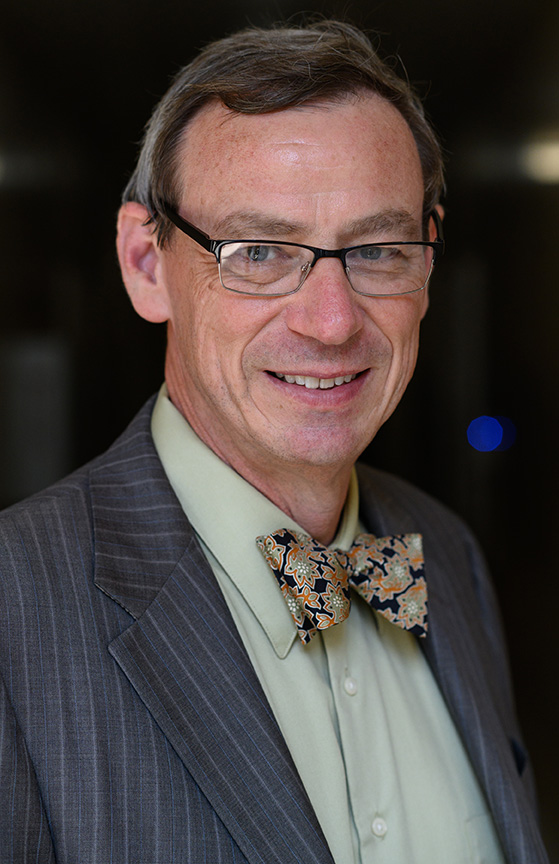
Carnegie Mellon Hosts International Subatomic Physics Conference
More than 120 scientists from around the world converged on Carnegie Mellon’s campus in June to share the latest breakthroughs in nuclear and particle physics.
“There’s a community of physicists interested in the interactions of mesons and nucleons,” said Professor Reinhard Schumacher, who co-chaired the local organizing committee of the 15th International Conference on Meson-Nucleon Physics and the Structure of the Nucleon (MENU). “We like to think of it as a boundary between nuclear and particle physics.”
Over the course of five days, more than 100 presentations were given on leading topics in the field, including more than a dozen presentations by graduate students getting exposure to presenting at a major conference. Notably, several Carnegie Mellon alumni also presented their current work, including an opening talk by Florida State University Assistant Professor of Physics Sean Dobbs, a 2003 graduate.
Schumacher and fellow co-chair Professor Curtis Meyer spent a year working with a local organizing committee made up of physicists at Carnegie Mellon and other area universities to pull together the conference.
“Reinhard and I both felt that the conference was a big success,” Meyer said.
Conference Aims to Save the Sky from Light Pollution
Have you ever noticed that when you’re in the country, there seems to be more stars in the night sky than when you’re in the city? The stars are still there, you just aren’t able to see them due to the presence of other light from things like buildings, cars and streetlights.
The inaugural Dark Skies Conference, held this past summer at Carnegie Mellon, sought to educate people about the harms of light pollution and how to go about remedying it.
In 2012, Special Lecturer Diane Turnshek visited the Mars Desert Research Station out in the empty expanses of southern Utah. “The sky out there in the desert blew me away,” she said. “I just don’t understand how people can live without seeing the stars.”
That trip inspired Turnshek’s longtime crusade against light pollution, with the Dark Skies Conference she organized being only the latest iteration of it.
The conference brought together astronomers, urban planners, sleep researchers and others to discuss the effects of light pollution and how to fix them. Beyond just blotting out the stars, light pollution has been shown to affect human health, animal behavior and even trees. “It’s everybody’s problem,” Turnshek noted. “It takes everybody to have a solution.”

